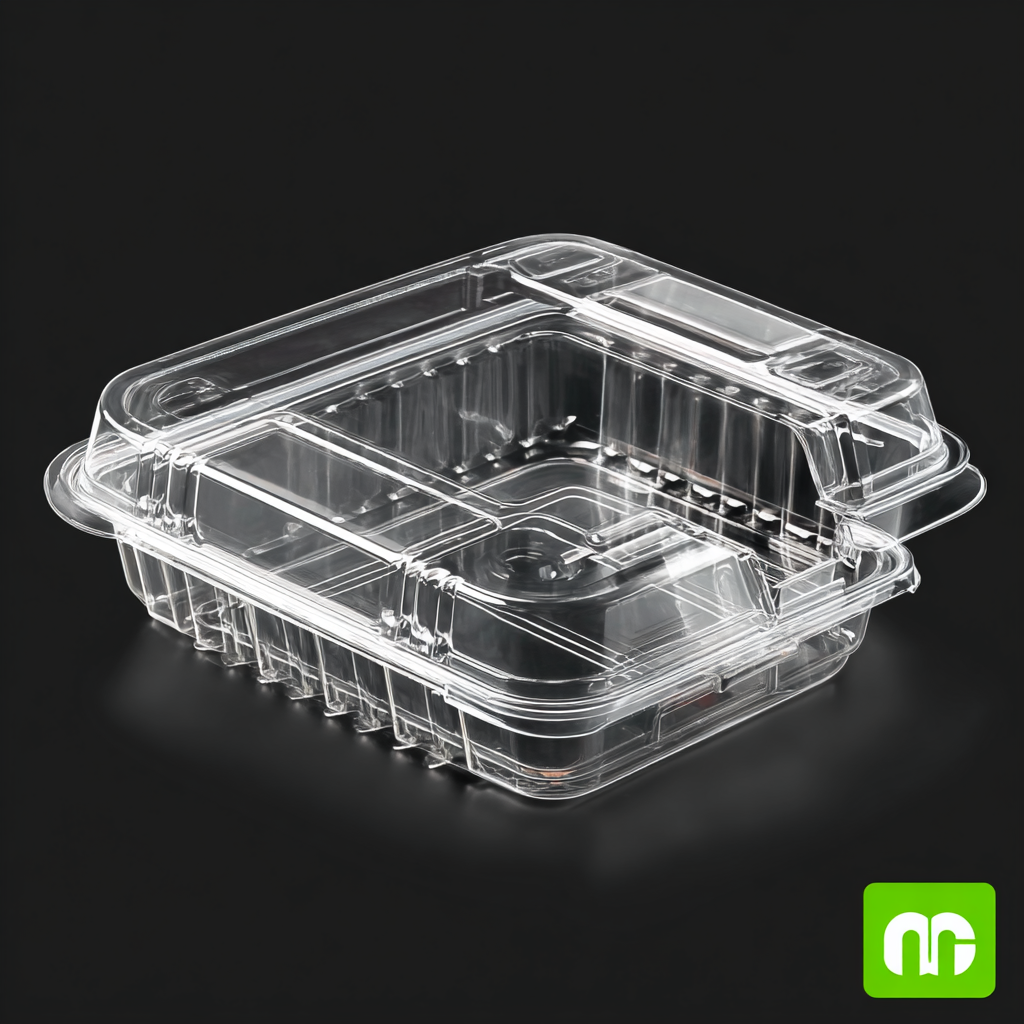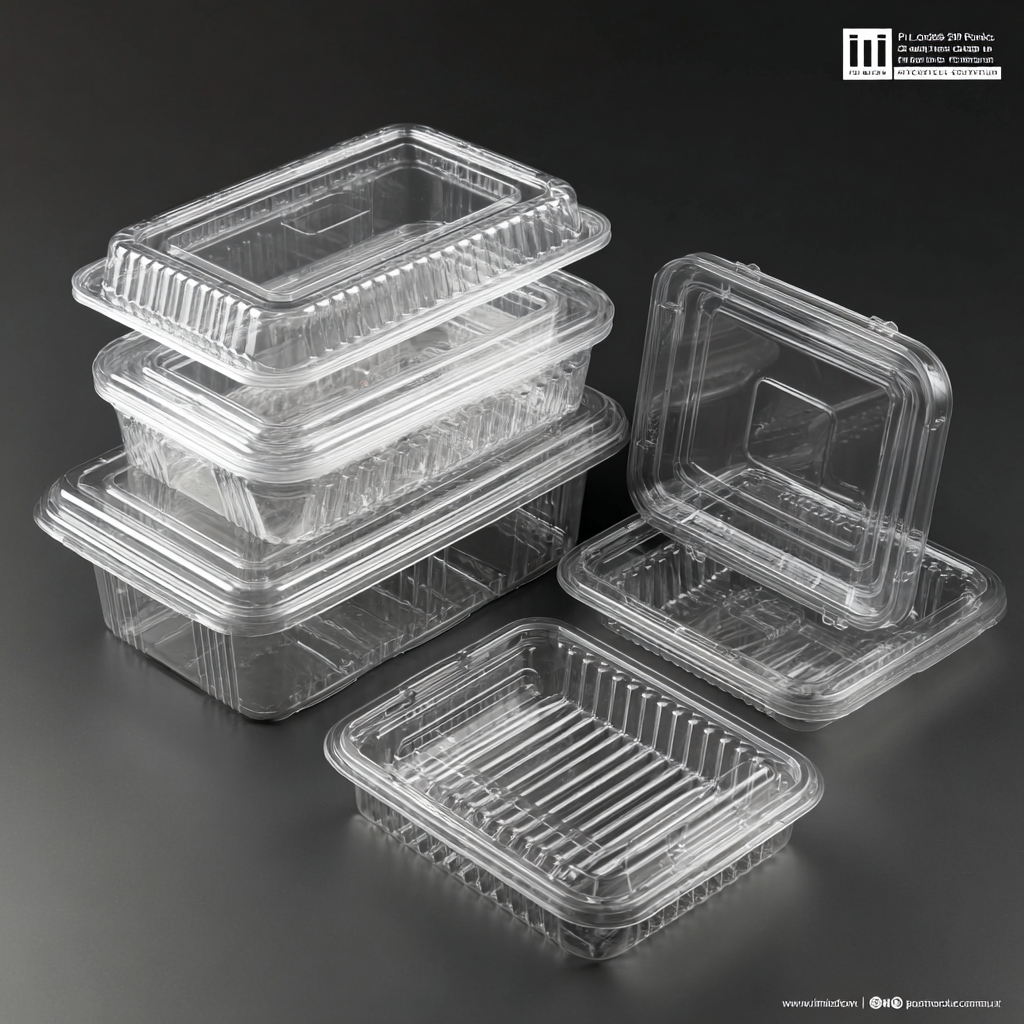7 Best Plastic Clamshell Containers for Global Buyers in 2023
In the ever-evolving landscape of packaging solutions, plastic clamshell containers have emerged as a versatile and efficient choice for businesses across the globe. As we navigate through 2023, the demand for these containers has surged, driven by their ability to provide secure, visually appealing, and environmentally adaptable packaging options. This blog aims to explore the seven best plastic clamshell containers tailored for global buyers, highlighting their innovative designs and practical applications in various industries.

From food service to retail, understanding the key features and benefits of these containers will empower businesses to make informed decisions that enhance product presentation while meeting sustainability goals. Join us as we delve into the future of plastic clamshell containers and discover the top choices that are shaping the packaging industry today.
Overview of Plastic Clamshell Containers: Benefits and Applications
 Plastic clamshell containers have become increasingly popular due to their versatility and practicality in various industries. These containers, typically made from durable plastics, are designed to securely enclose products while allowing visibility. This transparency not only enhances product presentation but also enables consumers to easily identify contents, making them an excellent choice for retailers. Additionally, clamshells are reusable and recyclable, catering to the growing demand for sustainable packaging solutions.
Plastic clamshell containers have become increasingly popular due to their versatility and practicality in various industries. These containers, typically made from durable plastics, are designed to securely enclose products while allowing visibility. This transparency not only enhances product presentation but also enables consumers to easily identify contents, making them an excellent choice for retailers. Additionally, clamshells are reusable and recyclable, catering to the growing demand for sustainable packaging solutions.
The applications of plastic clamshell containers are vast, ranging from food packaging to electronics and retail displays. In the food industry, they are commonly used for salads, bakery items, and takeout meals, providing an airtight seal that maintains freshness. In retail, clamshells offer an effective way to package small items, such as cosmetics or hardware, protecting them from damage while showcasing them attractively on shelves. Their stackable design also aids in efficient storage and transportation, making clamshell containers a preferred option for businesses looking to optimize their logistics and enhance customer satisfaction.
Key Features to Look for in Plastic Clamshell Containers
When selecting the best plastic clamshell containers, it’s essential to consider several key features that can greatly enhance their utility in various applications. First and foremost, look for containers with secure locking mechanisms. A reliable closure not only ensures the safety of the contents but also provides convenience during transportation. Additionally, opt for clamshells that are made of food-grade materials, especially if they will be used for storing or presenting food items, as this ensures compliance with health standards.
Another important feature is the clarity of the plastic. High transparency allows for quick visibility of the contents, making it ideal for retail displays. Consider containers with customizable labeling options as well; this can streamline the branding process and improve customer engagement.
TIPS: Always review the size and shape of the clamshells to ensure they fit your specific needs. Consider the intended use—is it for delicate pastries or bulk items? Choosing the right design can prevent damage and enhance convenience. Also, check for environmentally friendly options; many suppliers now offer recyclable or biodegradable materials, aligning with sustainable business practices.
7 Best Plastic Clamshell Containers for Global Buyers in 2023 - Key Features to Look for in Plastic Clamshell Containers
| Container Type | Material | Size (L x W x H in cm) | Weight Capacity (kg) | Temperature Resistance (°C) | Recyclability |
|---|---|---|---|---|---|
| Single Compartment | PET | 20 x 15 x 10 | 2 | -20 to 60 | Yes |
| Hinged Lid | PP | 25 x 18 x 12 | 3 | -10 to 60 | Yes |
| Multi-Compartment | PS | 30 x 20 x 15 | 4 | -10 to 70 | No |
| Dessert Clamshell | PLA | 15 x 10 x 5 | 1.5 | -20 to 50 | Yes |
| Bento Box Style | PP | 20 x 15 x 8 | 2.5 | -20 to 60 | Yes |
| Produce Container | PET | 30 x 20 x 10 | 5 | -20 to 60 | Yes |
| Takeout Container | PS | 25 x 15 x 10 | 3.5 | -10 to 70 | No |
Top 7 Manufacturers of Plastic Clamshell Containers Approved by Global Standards
In 2023, the demand for plastic clamshell containers has surged significantly, driven by the rising need for sustainable packaging solutions in various industries. According to a recent report by ResearchAndMarkets, the global clamshell packaging market is projected to reach USD 2.5 billion by 2028, reflecting a compound annual growth rate (CAGR) of 4.1% from 2021 to 2028. This growth is attributed to the increasing preference for lightweight and recyclable materials, which are crucial for meeting both consumer expectations and regulatory standards concerning environmental impact.
Among the top manufacturers making notable strides in this sector are Amcor, Berry Global, and Plastipak. These companies not only adhere to global quality standards but also invest in innovative technologies to enhance production efficiency and reduce waste. For instance, Amcor’s commitment to sustainability is highlighted in their 2022 sustainability report, which revealed that 100% of their packaging will be recyclable or reusable by 2025. As sustainability becomes a focal point for businesses and consumers alike, these manufacturers are setting benchmarks in the industry through their commitment to quality and environmental responsibility.
Comparative Analysis of Different Plastic Materials Used in Clamshells
When considering plastic clamshell containers, the choice of material plays a crucial role in their functionality, sustainability, and cost-effectiveness.
Different plastic materials such as PET, PVC, and PP each have distinct properties that make them suitable for various applications.
PET (Polyethylene Terephthalate) is a popular choice due to its excellent clarity and strength, making it ideal for products that require visibility and durability.
It's also recyclable, which enhances its appeal for environmentally-conscious consumers.
 On the other hand, PVC (Polyvinyl Chloride) offers flexibility and resistance to impact, making it an excellent option for clamshells that need to handle tougher conditions.
However, its recycling process is more complicated, which raises concerns regarding its environmental footprint.
Polypropylene (PP) is another common choice known for its lightweight nature and heat resistance, making it ideal for food packaging.
Each material presents its unique advantages and drawbacks, influencing not only the product’s protection and presentation but also its environmental impact.
Understanding these differences is essential for global buyers to make informed decisions that align with their sustainability goals and product requirements.
On the other hand, PVC (Polyvinyl Chloride) offers flexibility and resistance to impact, making it an excellent option for clamshells that need to handle tougher conditions.
However, its recycling process is more complicated, which raises concerns regarding its environmental footprint.
Polypropylene (PP) is another common choice known for its lightweight nature and heat resistance, making it ideal for food packaging.
Each material presents its unique advantages and drawbacks, influencing not only the product’s protection and presentation but also its environmental impact.
Understanding these differences is essential for global buyers to make informed decisions that align with their sustainability goals and product requirements.
Sustainability Practices in the Production of Plastic Clamshell Containers
Sustainability practices in the production of plastic clamshell containers have gained paramount importance as the world grapples with food waste issues. On average, about 30% of the edible portion of global food production is lost or wasted in the supply chain. By adopting sustainable manufacturing processes, companies can mitigate their environmental impact while extending the shelf life of perishable goods. Utilizing recycled materials in the production of clamshell containers not only reduces dependence on virgin plastics but also encourages a circular economy, where materials are continuously recycled and reused.
To optimize your use of clamshell containers, consider implementing a few practical tips. First, choose containers that are designed for stackability; this not only saves space during transportation but also enhances store presentation. Additionally, ensure that the clamshells are BPA-free and made from food-safe plastics to promote consumer safety. Lastly, educate your suppliers and consumers about the recyclability of these containers, reinforcing the importance of proper disposal methods to minimize waste. By embracing both efficiency and sustainability, businesses can play a crucial role in reducing the significant losses within the food supply chain.
